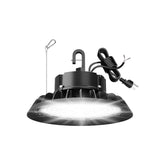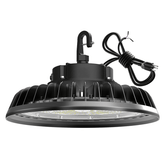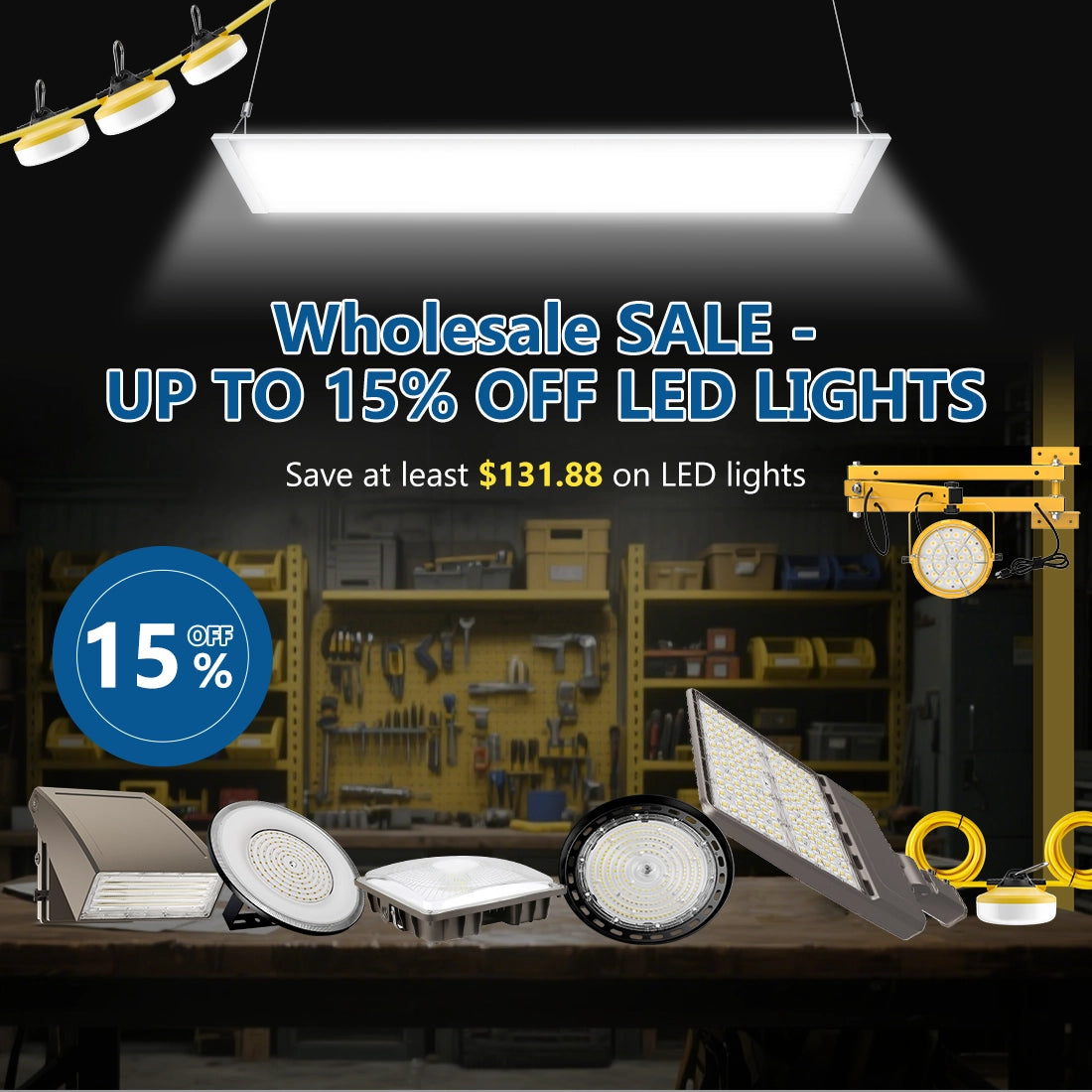LED temporary construction light purchase guide
Lighting can make or break any building or renovation project. It can keep workers safe and help them complete tasks with fewer mistakes. Conventional bulbs often burn out quickly or generate too much heat, prompting many professionals to switch to conventional bulbs. This is where LED building lights come in. They save energy, stay cool, and can easily cope with harsh environments.
But these lights aren't just for construction sites. From emergency response and outdoor concerts to simple home repairs, LED temporary building lights provide bright, portable lighting when needed. Before deciding on a lighting solution, it can be helpful to understand the various scenarios in which they can be used. This guide gives you inside information on the main applications and provides practical tips to help you choose the right temporary building light for your project.
Section 1: Application of LED temporary construction lights
Here are the most common Settings where temporary construction lights can improve safety and efficiency.
Construction site
On busy construction sites, visibility is a top priority to reduce accidents and improve workflow. Construction lights LED fixtures handle dirt, dust and rough handling without burning out. Its bright output helps workers spot hazards, read blueprints and work productively - even in low light or late at night.
Emergency
Natural disasters, power outages and search and rescue efforts often require fast and reliable lighting. LED temporary construction lights can be deployed in an instant, so they are popular with emergency personnel and first responders. Because they consume less power, they are also easier to power with backup generators or portable battery packs.
Warehouse and industrial space
Industrial environments, especially those still under construction, may not yet have permanent lighting installed. Temporary construction lights can be hung in strategic locations so workers can see roads, walkways and workstations, providing you with temporary solutions. This also eliminates the need for significant investment before the building is fully operational.
Sports and recreational outdoor activities
Whether it's a night softball game, a park sport, an open-air concert or a major festival, LED building lights can bring magic to event organizers. They can withstand changing weather and are easy to install and remove. Participants can safely walk around the venue; The performer or player benefits from consistent lighting.
DIY and home improvement
Even simple home improvement projects can benefit from professional lighting. Household light bulbs are not always powerful or reliable enough for tasks like painting, wiring, or woodworking in areas where daylight is limited. Temporary building lights are a great alternative, as they can provide powerful lighting without sending your electricity bill soaring.
Part 2: Types and models of LED building lights
LED technology covers a wide range of products designed to meet construction site, task and lighting needs. Here are some of the most common LED building lights, each with its advantages and disadvantages.
String light
String lights are ideal for large areas that require uniform lighting. These lights are usually equipped with multiple LED bulbs and are distributed along a single wire, making it easy to hang around the perimeter of a building, from scaffolding, or overhead. Because each bulb emits the same light, the entire space presents a balanced light, reducing dark corners and shadows. They are also suitable for sidewalks and hallways, where there may be a risk of tripping or colliding.
Advantage:
- Large area uniform lighting.
- Easy to set up and move as work progresses.
- Durable wire for harsh environments.
Shortcoming
- It may not be possible to provide the precise brightness of a more focused light.
- Installation requires multiple anchor points or hooks.
Working light stand
Working light stands provide you with flexible, height-adjustable lighting. They are typically equipped with one or two powerful LED caps on a retractable stand, allowing you to direct the light exactly where it needs to be. Suitable for both indoor and outdoor projects, these light stands fold up for easy transportation and can be stored neatly in a workshop or utility vehicle.
Advantage
- Adjust the height for targeted lighting.
- Portable and relatively light.
- Perfect for painting, sanding or inspection tasks.
Shortcoming
- Stable, flat ground is needed to prevent tipping.
- Slightly bulkier than other temporary construction lights.
Floodlight
Floodlights are known for their high output, making them the first choice for wide coverage. Ideal for large venues, parking lots or outdoor parties, these LED temporary building lights emit a wide beam that can be clearly seen by workers or event staff. Many floodlight models have weatherproof housings that protect against rain, dust, and wind.
Advantage
- Extremely bright, covering a large area.
- Usually designed to withstand bad weather.
- Can be easily mounted on a pole or bracket.
Shortcoming
- If placed incorrectly, it may cause glare.
- Higher power consumption compared to some smaller models.
Clip lamp
For smaller projects or local jobs, clip-on lights are an effective solution. They are compact and can be mounted to a beam, pipe or tabletop in seconds. Despite its small size, clip-on temporary construction lights are still powerful and perfect for delicate tasks such as plumbing or electrical work in tight Spaces.
Advantage
- Quick and easy installation.
- Ideal for precise lighting in narrow areas.
- Lightweight, travel-friendly design.
Shortcoming
- Limited coverage compared to larger units.
- Clamping strength will vary depending on the quality of the product.
- Rechargeable/battery powered light
Rechargeable models are ideal for off-grid or remote areas where there is no readily available power supply. These lights typically use lithium-ion batteries to provide hours of operating time. From disaster relief sites to camping trips, battery-powered building light LED fixtures illuminate work areas without the need for an outlet.
Advantage
- No external power is required to operate.
- USB ports are usually included to charge the device.
- Ideal for portable work Settings or emergencies.
Shortcoming
- Requires frequent recharging or battery backup.
- Brightness and runtime may vary from brand to brand.
- Magnetic LED working light
Magnetic LED work lights allow you to attach them to any metal surface, leaving both hands free for the task at hand. They are commonly used in automobile repair, metal fabrication and steel construction. The magnet holds the lamp firmly in place, so you don't have to worry about balancing or supporting it.
Advantage
- Hands-free operation.
- Easy repositioning.
- Ideal for automotive or steel-related tasks.
Shortcoming
- Adhere only to metal surfaces.
- The strength of the magnet will weaken over time or with too much dust.
- Integrated tripod system
For larger-scale projects, the integrated tripod system combines the stability of a tripod with a powerful LED lamp head. They are similar to working light stands, but often have other features such as adjustable angles, more durable construction, and the ability to mount multiple lamps on a single stand. These temporary construction lights allow you to illuminate much of a venue or event space and withstand everyday wear and tear.
Advantage
- Multiple light Settings for maximum coverage.
- Durable tripod for use in harsh conditions.
- Adjustable Angle and height to suit different tasks.
Shortcoming
- Large volume during transportation.
- More assembly may be required compared to simple units.
Each of these models meets specific needs, so matching the lighting style to your project is crucial. This makes it easier to stay efficient and safe without overloading energy use or cluttering the work site with additional equipment. By choosing the right LED temporary construction light for your environment, you can get better visibility, smoother workflow and fewer unexpected hassles.








